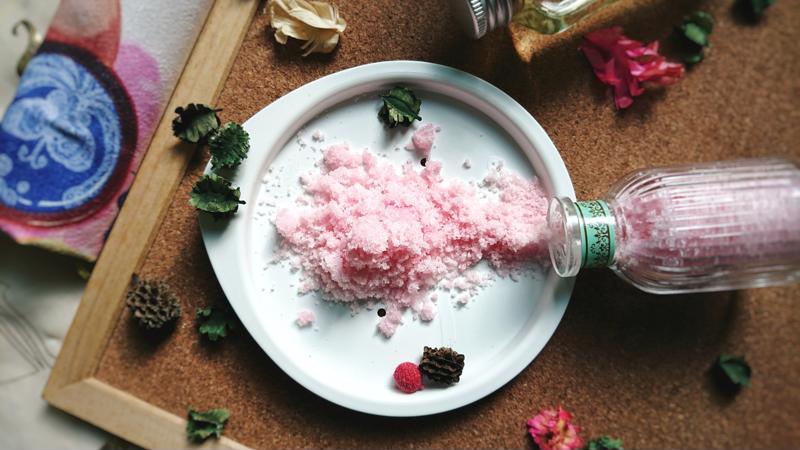Although flavor may be the first thing people think of when a dessert or baked good is mentioned, appearance is just as critical in attracting and impressing eaters. Whether it’s a classic rendition created with care or a novel, daring approach to a well-known dish, the visual experience is a vital part of eating baked goods.
Using the unique properties of Himalayan sea salt, in terms of both the color it adds to a variety of dishes and the taste that can contrast so well with the sweet notes of many baked goods, can lead to a great final product. Students considering attending an Austin baking school should keep the power of Himalayan sea salt in mind as they learn about creating great flavors and visual experiences.
 Himalayan sea salt can shine as a garnish for a variety of sweet and savory dishes.
Himalayan sea salt can shine as a garnish for a variety of sweet and savory dishes.What is Himalayan sea salt?
Himalayan sea salt commonly comes from Pakistan, mined in the foothills of the western end of the Himalayan mountain range. There are a number of unproven health claims associated with it, Science-Based Medicine pointed out.
For pastry arts students, that controversy doesn’t need to be a worry – pink sea salt is very similar to common table and sea salt, with a few minor, safe-for-consumption impurities that add a variety of pink hues. It’s essentially a vibrant decorative addition that can be used in many different dishes.
In nearly all cases, salt used in the dough, frosting or other blended components of a recipe can be generic salt. While Himalayan sea salt offers a unique visual, it’s also more expensive than most alternatives.
Recipes that let this pink salt shine
Because Himalayan sea salt is more of a garnish that an integral ingredient, the opportunities to use it are broad. As a pastry chef, you should look for opportunities to apply basic color theory and design principles as well as culinary training, picking dishes where the pink hues strike a pleasing contrast with the colors of the underlying dessert or baked good. Some options include:
On the top or edge of a chocolate frosting
The deep brown of a chocolate cake or tart with chocolate frosting embodies richness and the unique flavor of cocoa. It doesn’t offer much in the way of visual variety or a spectrum of colors, however. Salt and chocolate are a great flavor combination, so don’t be afraid to garnish the rosettes and other decorative frosted elements of your cake with a touch of Himalayan salt. If you’re looking for a recipe, Serious Eats offered a salted chocolate caramel tart where the regular pinch of sea salt can easily be substituted with the pink variety.
Sprinkled on caramel
Salted caramel is more than a fad at this point. It’s an enduring flavor combination that eaters across the country and the world enjoy. Switching up the regular appearance of such dishes by using pink instead of white salt is a novel way to put your own mark on a dessert without drastically altering its flavor. This hazelnut butter cake with sea salt caramel from Bon Appetit can easily be finished with a sprinkle of pink atop the gooey caramel.
Bringing color to cookies
The sweet flavor of an oatmeal cookie, whether containing raisins, chocolate chips or both, is a classic enjoyed by diners of all ages. While they pack a punch in the flavor, texture and nostalgia departments, their appearance can be a bit uniform. A light dusting of pink sea salt on top of an oatmeal cookie – or a variety of other ones – adds a unique look while accentuating the taste of the dessert, too. In need of a recipe? Consider this version from Martha Stewart.


